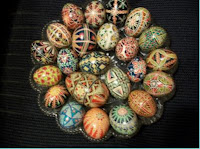The land we currently call Poland is one of contrasts. The country’s total area is slightly over 120,700 square miles, a bit smaller than the combined areas of the states Wisconsin and Illinois.  Forests cover almost 29% of the land. More than 1% of the land is classified as a national park, therefore protected by the government.
Forests cover almost 29% of the land. More than 1% of the land is classified as a national park, therefore protected by the government.
 Forests cover almost 29% of the land. More than 1% of the land is classified as a national park, therefore protected by the government.
Forests cover almost 29% of the land. More than 1% of the land is classified as a national park, therefore protected by the government.
On the northern border one finds the Brackish Baltic Sea. Along this area you will find many long sandy beaches, impressive cliffs and unusual geological formations. Dense forests can also be found here. There are many islands in the Baltic Sea; many under the flag of Poland. Some of these are under government protection due to the varied protected wildlife such as eagles, wild boar and other protected species. There is also a small bison preserve on one of the islands. Others contain resorts which are enjoyed in the summer months. These are major tourist attractions for the Poles and other nationalities. Also found are the remains of one of the oldest Slav settlements that had been built during the 9th and 10th centuries. At one point in the history of the land, this area had been a Viking stronghold. This event continues to be celebrated in an annual Viking Festival held in Wolin.
The land along the Baltic shoreline also holds its charm. Here one finds beaches and sand dunes, lakes and flooded meadows. Spas, resorts and many historic buildings also tempt the tourist who journeys to the coast. Scattered among the resorts one finds many fishing villages. Even a 14th century castle once occupied by the Pomeranian Duke Eryk I who had also ruled Denmark, Sweden and Norway can be seen in the area.
It is along the shoreline that one finds Poland’s fourth largest city, Gdansk. It has long been Poland’s major port and trading center. Here one finds many historic buildings some dating back to the 10th century. There are fine examples of Gothic, Renaissance and Baroque architecture much of which was destroyed during World War II but beautifully restored by a people proud of their heritage.
Now we travel to the contrasting southern border of Poland. Here we find the Tatra Mountains, part of the Carpathian Mountain range. The Tatras contain some of the highest mountain peaks of this range. Winter sports abound in this beautiful area as tourists flock to resorts scattered around the Tatras. This area has well earned the title “Winter Capital of Poland”
Since World War I, the small town of Zakopane at the foot of the mountains has been known as a refuge for well-known artists, a place to relax and enjoy the rustic beauty of the area. It continues to be known today as a Bohemian town attracting many artist, writers and composers. Zakopane also hosted the 2006 Winter Olympics and both the 2011 and 2013 Alpine World Ski Championships.
Even so it is the mountain peaks that attract most of the three million tourists that visit annually. The area is enjoyed by both the Poles and many other Western Europeans for skiing and various other mountain sports. The entire mountain area is part of the Tatra National Park which was created in 1954. The park holds a wide variety of both indigenous and Alpine plants and animals which are protected by the park system. The area is one of the Poland’s last refuges for the Golden Eagle. You will also find bears, Marmot and chamois, to name a few.
Previous to the creation of the park, the area was inhabited by the Polish peoples called Gorale or mountain highlanders. Here they could have been seen grazing goats, sheep, and cows in the summer pastures of the Tatras. The language of the Gorale is a mixture having Polish as the base language. Their original culture is preserved in stories told by the highlanders who still live in the area.
The central region of Poland is the largest. On the west it extends to Germany and the Czech Republic and on the east to Lithuania, Belarus and the Ukraine. It consists of flat plains interspersed with lakes and ice-aged rivers. The geography of this area allowed Poland to become a natural roadway between foes; usable for other counties during various European conflicts.
 |
| City of Poznan circa 1890. |
The towns can be bustling cities like Warsaw, Krakow or Posen or small, quaint villages containing thatched wooden cottages. Nobles’ castles are preserved and war torn cities have been rebuilt. Most Polish cities have retained their medieval layouts containing a town square with markets, a town hall and burgher’s houses. The architecture can range from Romanesque to Gothic, Renaissance to baroque or neoclassical. In the large cities one also sees the bland apartments built during the 45 years of communist control.












+&+Stanley+-+1918+Sep+24+-+wedding+b+(2).jpg)

+believed+to+be+taken+when+she+married+Andrew+Opalenik.jpg)
+-+1929+Jun+19.jpg)



%2Bb.jpg)